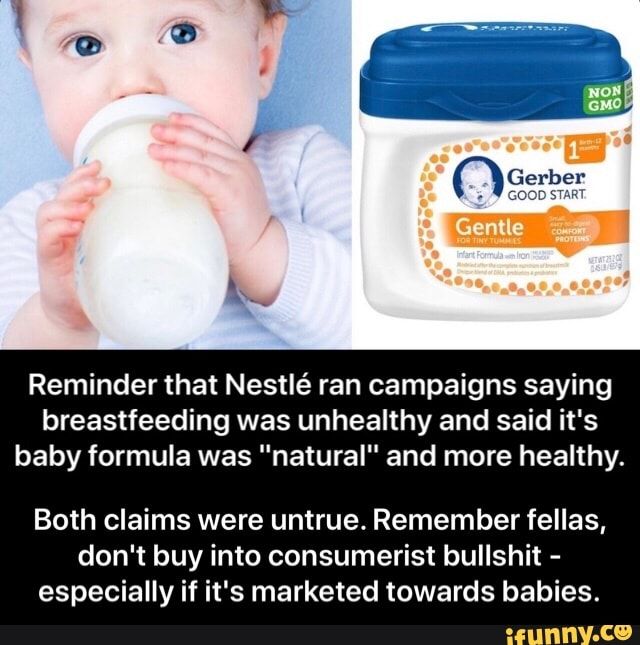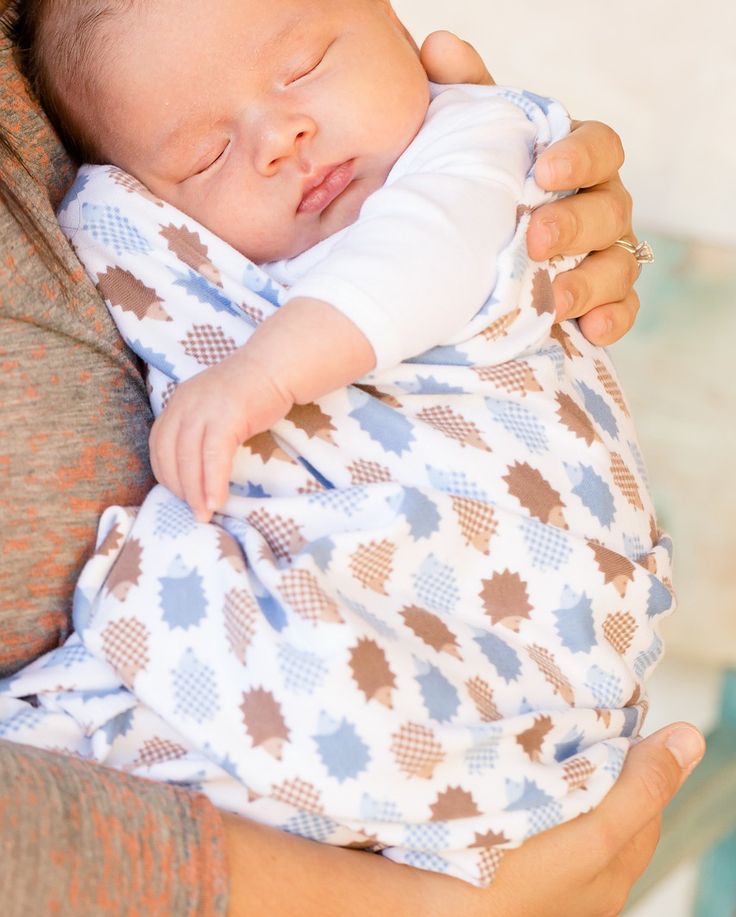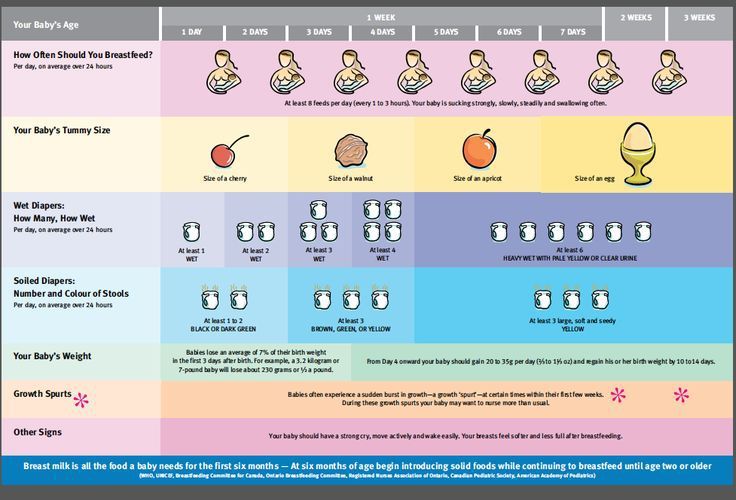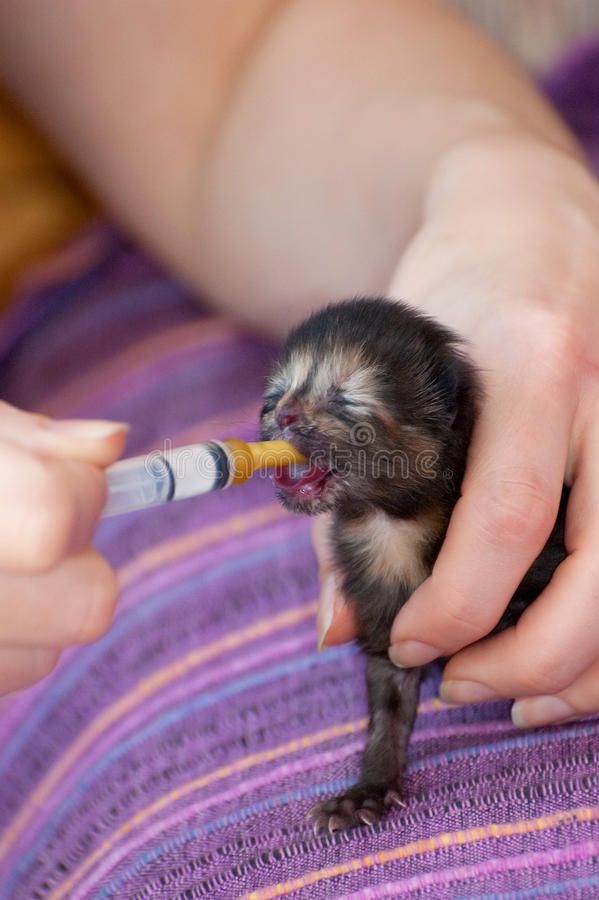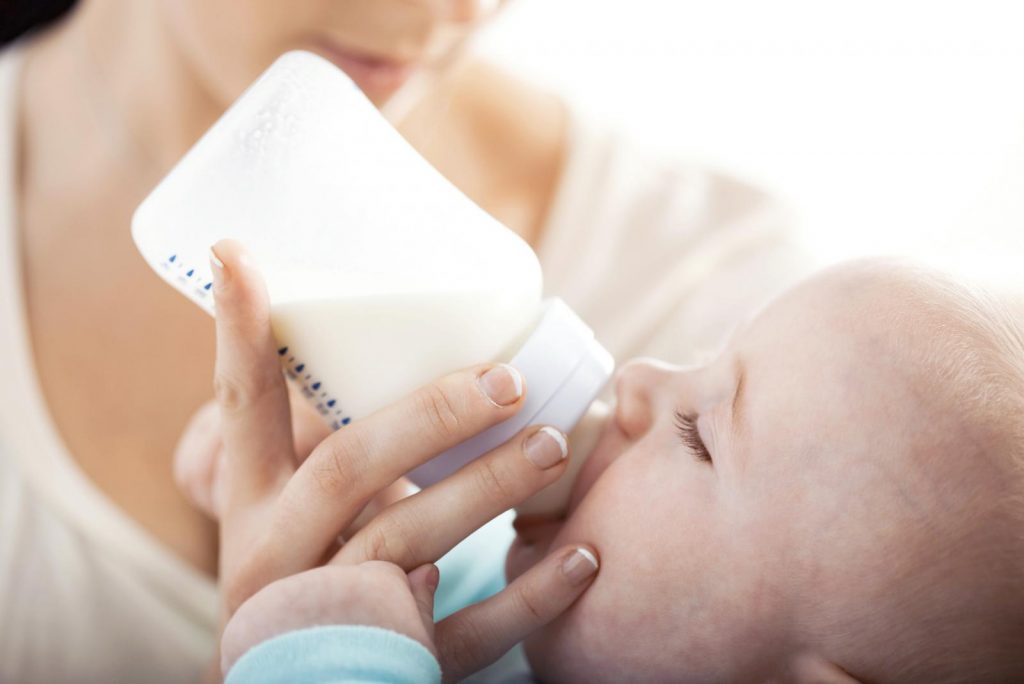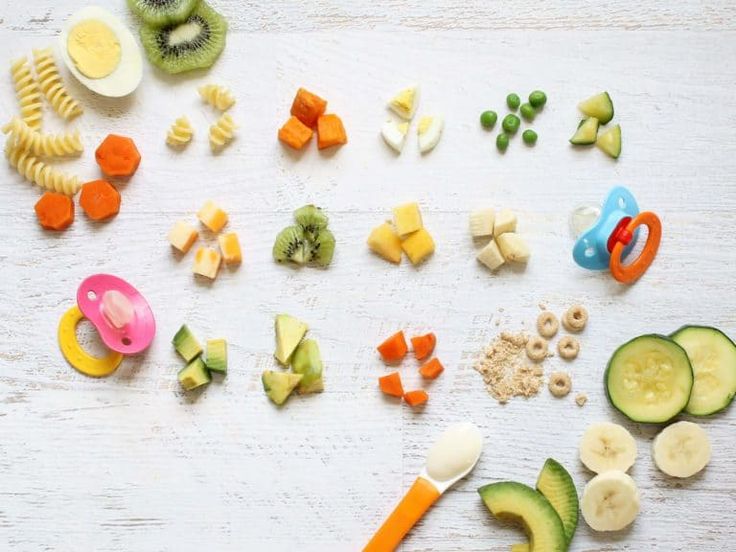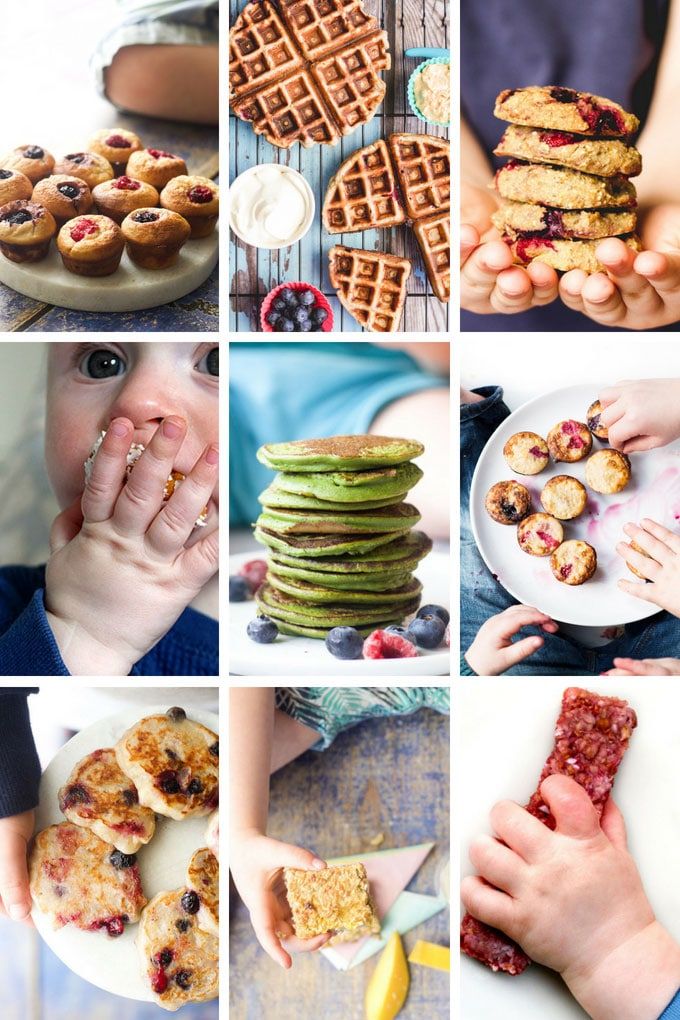Where to recycle baby food pouches
Here's How to Recycle All Those Empty Squeeze Pouches (for Free)
By
Sarah Showfety
Comments (2)Alerts
Photo: TonelsonProductions (Shutterstock)
If you have young kids, chances are, you’ve got some squeeze pouches in your house. While their mess-free convenience, light weight, and packability make them a parents’ dream, knowing how to responsibly dispose of them is not as dreamy.
Surprisingly, there are a few environmental plusses to their existence. Due to their light weight and small size, they’re relatively low-carbon to ship (as compared to traditional glass jars), and they don’t require the energy of refrigeration to keep them shelf-stable in the store. But since their construction relies on multiple materials like plastics, layered films, aluminum, and paperboard, mainstream American recyclers don’t have the systems to properly sort and peel the containers. Alas, into the trash bin they go.
Fortunately, there’s a way to reduce their presence in landfills. Check out these alternatives to tossing them out.
How to recycle plastic squeeze pouches
New Jersey-based TerraCycle has been collecting non-recyclable waste and turning it into new products since 2001. By partnering with more than 100 of the world’s largest brands (like Nestlé, Staples, Bic, and Brita), they’ve found a way to make recycling beneficial to both the environment and the images of multi-billion-dollar corporations.
Send in your empty squeeze pouches (and so many other things you didn’t think were recyclable, like Pringles tubs and toothbrushes) and they will shred, melt and chop the material into hard, rice-sized pellets that can be used in the manufacturing of other plastic items, such as benches and picnic tables.
While you don’t need to rinse the pouches, you do need to squeeze any remaining contents out prior to shipping. If you do choose to wash them out, be sure they’ve dried completely before sending. When you’re ready, create an account, print a shipping label, and drop it off at any UPS location.
When you’re ready, create an account, print a shipping label, and drop it off at any UPS location.
How many (and what brands) can I send?
There is no minimum number of pouches that TerraCycle will accept. However, if you send in more than ten pounds-worth, you’re eligible to earn points that, according to their website, can be redeemed for “charitable gifts, product bundles or a payment of $0.01 per point to the non-profit organization or school of your choice.” (Sounds like a great project for a school or non-profit youth group. They even have best practices and art for creating an effective neighborhood collection bin.)
And fear not, HappyBaby, Gerber, or Up & Up brand consumers: While GoGo squeeZ seems to be the anchor brand, in the FAQ on TerraCycle’s website they confirm, “You may collect any brand of waste for this free recycling program.” (They list “healthy snack plastic pouches and caps” in their “accepted waste” flier and a promotional picture includes other brands. )
)
Plum Organics also has a squeeze pouch cap recycling program that accepts caps from all manufacturers, not just their brand
Or...just make your own
Of course, the other option is to avoid the single-use pouches altogether and go the DIY route. Amazon sells reusable squeeze pouches (with convenient front flaps for refilling). Load up on your favorite jar of apple sauce at Costco, or make some homemade tasty purees (with hidden vegetables, of course), and enjoy the magic of the flexible pouch without any guilt.
Can I recycle baby food pouches?
Have a few minutes to help out Grist’s favorite advice columnist? Please take our survey.
Q. Dear Umbra,
I’ve been using food pouches for my kids for a couple of years and have horrible guilt. Lately, I’ve been saving them and have been trying to figure out if they can be recycled. I think I can bring the tops to the Preserve Gimme 5 bin at Whole Foods, but it also looks like TerraCycle will take both the pouch and cap.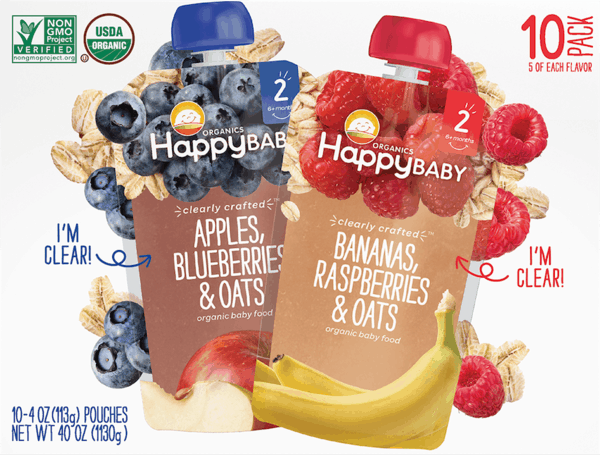 But then I found an old article saying TerraCycle is all about greenwashing. Can you please help me figure this out?
But then I found an old article saying TerraCycle is all about greenwashing. Can you please help me figure this out?
Stephanie
Arlington
Grist relies on the support of generous readers like you. Donate today to keep our climate news free. All donations matched!
- One Time
- Monthly
- $10
- $15
- Other
A. Dearest Stephanie,
Dearest Stephanie,
I don’t have any kids, and I’m no toddler. But I confess I’ve passed those baby/toddler food pouches at the grocery store on more than one occasion and thought, “Mmm, I wonder if I could get away with eating that as my afternoon snack.” I mean, roasted pumpkin and coconut rice? Pears, mangoes, and papayas? Don’t mind if I do!
I can see the appeal of ready-to-eat treats in such packages even beyond the delectable-sounding flavors. Parents like ‘em because they’re a convenient, packable, (slightly) less messy way to keep those little mouths fed. Companies like ‘em because they’re shelf-stable and cheap to produce. And believe it or not, there are reasons for environmentalists to like ‘em, too. Their shelf-stableness saves on energy because they don’t need to be refrigerated; they’re much smaller and lighter than alternative packages, like glass jars, so they require fewer resources to make; and they’re also cheaper and less fuel-intensive to ship. All these benefits help explain why we’re seeing more and more foods, from trail mix to coffee to pickles, pop up in flexible pouches.
But you’re familiar with their major downside, Stephanie: Flexible pouches are very difficult to recycle. That’s because they’re often made of multiple layers of different materials — including plastics such as PET and PE, aluminum foil, and paperboard — glued together. Individually, some of these layers are easily recyclable; but lasagna’d together, recycling them becomes a complicated and pricey endeavor. It’s the same issue that bedevils those aseptic cartons for soup, soy milk, and the like.
You’re right that the tops, at least, are a bit easier to resurrect into new products. The ones made from #2 plastic are curbside recyclable in some cities (other places can’t accept them because they’re too small to be sorted efficiently). If you buy Plum Organics brand, then the #5 plastic caps, as you note, can be dropped off or mailed in to Preserve’s Gimme 5 recycling program. But the pouches are trickier, and the New Jersey–based TerraCycle recycling program is one of the few outfits that does accept kid pouches from a few brands.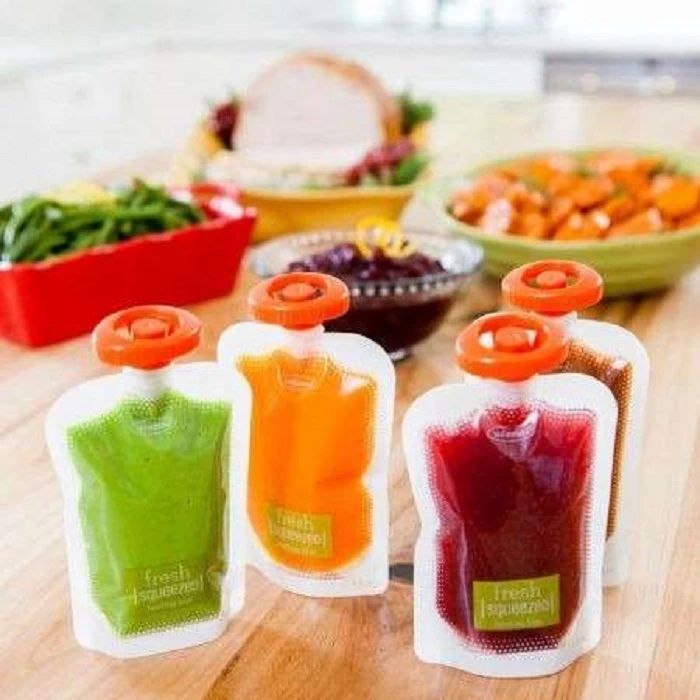
Good news: I’ve seen nothing to make me think TerraCycle is greenwashing anything. In its model, consumers send in hard-to-recycle items; the company then chops them, melts them, and sells them to be made into things like benches and pallets. Other companies help pay for the process in exchange for the right to print “recyclable through TerraCycle” on their goodies. Some criticize TerraCycle on the grounds that this doesn’t encourage manufacturers to switch to easily recyclable packaging; TerraCycle counters that these lighter-weight packages are an overall environmental win (for all the reasons we discussed above), so it’s better to keep them in play.
My take? In a perfect world, nobody would use any throwaway packaging at all, so there would be no need for such a service. But we don’t live in such a world. Yes, it would produce less waste for you to make all your toddler snacks at home and feed them to the kids on reusable dishes. It would also produce less packaging waste if we all grew our own fruits and vegetables and baked our own potato chips. But that’s not doable for most people in this day and age. I say, reduce your consumption as best you can, reuse as best you can, and then recycle as a third line of defense. And shipping hard-to-recycle items to TerraCycle is better than landfilling them. (If your kids are real pouch fiends and you have the time for DIY puree, you can take it down one more notch by switching to these reusable pouches instead of disposables.)
But that’s not doable for most people in this day and age. I say, reduce your consumption as best you can, reuse as best you can, and then recycle as a third line of defense. And shipping hard-to-recycle items to TerraCycle is better than landfilling them. (If your kids are real pouch fiends and you have the time for DIY puree, you can take it down one more notch by switching to these reusable pouches instead of disposables.)
I absolve you of your guilt over squeezable pouches, Stephanie. They’re small fry, not one of the things worth much of your concern. Mom guilt has reached epic proportions in this country, so let’s make snack time, at least, a feel-good time for all.
Squishily,
Umbra
The only newsroom focused on exploring solutions at the intersection of climate and justice. Our in-depth approach to solutions-based journalism takes time and proactive planning, which is why Grist depends on reader support. Your gifts keep our unbiased, nonprofit news site free. All donations matched for a limited time.
All donations matched for a limited time.
The only newsroom focused on exploring solutions at the intersection of climate and justice. Your support keeps our unbiased, nonprofit news free. All donations matched for a limited time.
Donate Now Not Now
Next ArticleWe fact-checked what Trump and Clinton said about energy at the debate
Where to put baby food jars? They asked me to tell you more - and here I am.
I’ll say right away that I’m not too turned on this topic, I’m just interested (haha, and I worked in the reserve, gave lectures at schools, didn’t miss a single Saturday work, and also sorted out garbage on empty hills) and I sympathize, so I try to do what I can .
1. What can be donated and not thrown away. Almost the entire range of dairy cuisine is suitable for processing. Bags of kefir, milk, mixture - this is Tetra-pak.
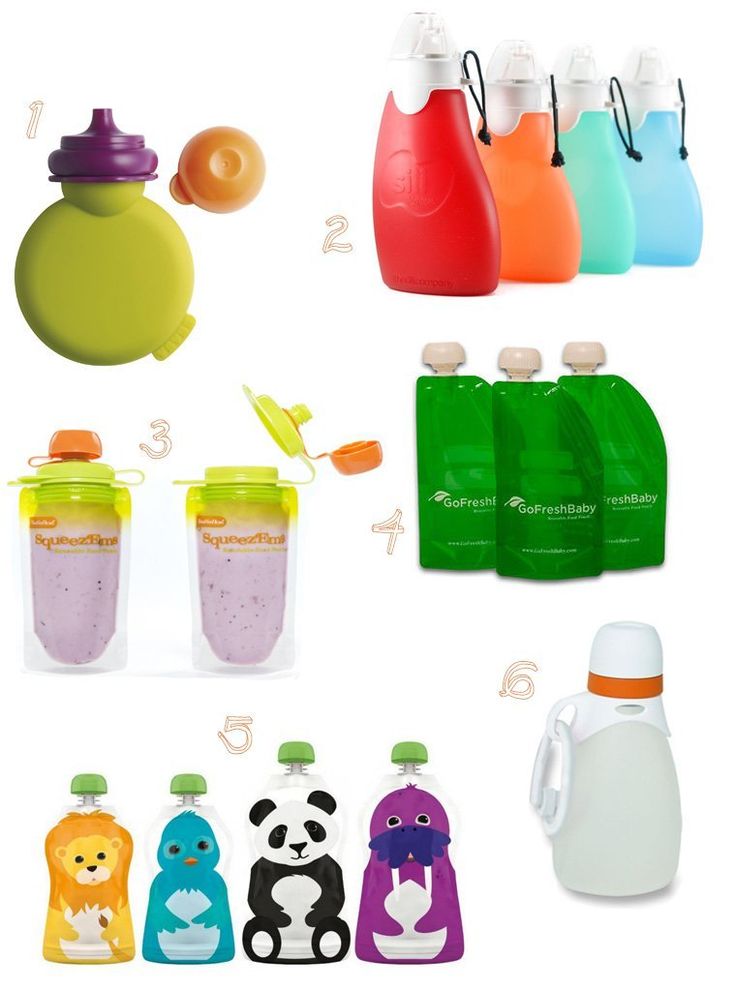 Food jars - of course, glass. Jars from cottage cheese - plastic. Boxes - paper or cardboard. In addition, at home there are probably still bottles of water, shampoo, trays for packaged goods (all this is also plastic, you can usually find a triangle with a number on the packaging - this is a type of plastic), cans of canned food or beer))
Food jars - of course, glass. Jars from cottage cheese - plastic. Boxes - paper or cardboard. In addition, at home there are probably still bottles of water, shampoo, trays for packaged goods (all this is also plastic, you can usually find a triangle with a number on the packaging - this is a type of plastic), cans of canned food or beer)) 2. Where can I donate. There are several sites with maps that collect information about points: Greenpeace, for example. If your city is not on this map, all that remains is to google and find out where you have what. Having found a convenient point, call there and ask if they are still alive - the points are always closing, moving - and find out what they accept. Depending on what they can hand over, collect it. If something is not accepted - well, you have nothing to do with it, throw it away. Sometimes I throw away cardboard and milk cartons, because they are in a landfill, if anything, they will quickly rot or burn. But the hand does not rise directly on glass or plastic.

3. How to assemble. Check this with the organizers of the reception point. Most often, the requirements are simple: recyclables must be clean. This is also important for you, because you can’t hold a dirty jar at home for a couple of weeks.
4. How to organize everything. I'm just going to tell you how things work for us. I rinse all the packaging jars immediately after eating the products, I have to cut the tetra-packs further to rinse inside. Then I dry it on a shelf, specially allocated in a cupboard for dishes. Ok, it's dry - I throw everything indiscriminately into a bag lurking behind the refrigerator. What can be flattened is ivy, simply by stomping on a yogurt box, for example. The same is often nested in one another. When the bag is full, I cowardly put it out on the balcony. When two or three packages are collected there and the husband shows concern about this, it's time to pack up. I haul the bags into the apartment and quickly sort through the contents. This month, for the first time, a businesslike son helped me! It turns out several smaller packages: plastics by type, glass, pieces of iron, paper.
 All packages in a large IKEA bag and off we go.
All packages in a large IKEA bag and off we go. I've been taking garbage to the Flakon resource saving center in Moscow for 2 years already and usually I try to make a trip for the baby's sleep or just on the way so that dad would go with us. Then everything turns out super: we park, the son sleeps in the car under the supervision of his father, I drag the garbage and put it in containers. As a rule, 20 minutes of free parking is enough for me.
Of course, there will be those who will say that there is no place for this in our kitchens, and indeed there is no time for such things. But it's really easy. I repeat that I'm not a fanatic and I can throw the jar into the bucket, but somehow I feel sorry for it. Yes, I am aware that one and a half people do this (in fact, no), that garbage dumps outside the Moscow Ring Road are as high as a five-story building - that's it, I just don't want to personally increase these mountains. Thank you for your attention))
And now at the same time: we are thinking with a friend to make a weekly mum's circle on Dmitrovskaya with chatter, not too organized games for kids from one to three and passing conversations about ecology, nature and other things.
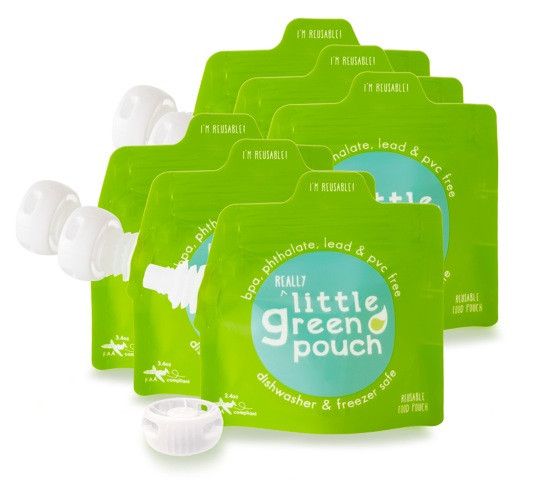 Payment is supposed to be minimal, only for renting the premises, as agreed. If you would be interested in this, let us know, it will inspire us and we will quickly start everything. The two of us are ready to get together - and we will.
Payment is supposed to be minimal, only for renting the premises, as agreed. If you would be interested in this, let us know, it will inspire us and we will quickly start everything. The two of us are ready to get together - and we will. How and where to donate humanitarian aid in Nizhny Novgorod for refugees from the DPR and LPR in 2022
How and where to donate humanitarian aid in Nizhny Novgorod for refugees from the DPR and LPR in 2022 | Nizhny Novgorod truthMap of new public transport routes in Nizhny Novgorod
Valid from August 23, 2022.
Download
Home | Society | Residents of Nizhny Novgorod collect humanitarian aid for refugees from the LPR and DPR
Society aid to Donbass
“Brothers born in Ukraine for us”
Photo: Alina Malinina
Over the past 24 hours, 40 people have already provided humanitarian assistance
Read us at
In Nizhny Novgorod, for the third day, a collection point for humanitarian aid for refugees from the Donetsk People's Republic and the Luhansk People's Republic, deployed at Rozhdestvenskaya Street, has been operating. 38. Today, February 21, the second truck with collected food and essentials will go to the Rostov region.
38. Today, February 21, the second truck with collected food and essentials will go to the Rostov region.
On shifted tables - bags of buckwheat, rice, stew, hygiene products, baby food. Natalya from Nizhny Novgorod brings two heavy bags of cereals into the public reception room of the Nizhny Novgorod branch of the United Russia party, where the collection point for humanitarian aid is located - she came straight from the store. Signed on the admission sheet.
- It is very important for me to take part in fundraising for refugees: who, if not Russia? explains the young woman. “I think that ordinary people are always ready to help those who are in trouble, and the Russians have always been generous from the very beginning. I also wanted to contribute.
A resident of Nizhny Novgorod, Oleg, together with his wife, brought three packages of groceries. According to him, they chose the most "long-playing" products that do not require a refrigerator - stew, pasta, sugar, condensed milk.
- We are people of the old school, born in the USSR, Ukraine and Belarus have always been brothers for us,” says Oleg. “I myself have repeatedly been to Odessa, since childhood we have been going there, how not to help our people!
We are waiting for Elena Ruchkina to sign her packages. Elena is a mother of many children, a representative of the Nizhny Novgorod Association of Large Families.
“I want to support the refugees, because there are children and women who are the most vulnerable and will suffer especially from the horrors of war,”—her voice trembles noticeably. — I can imagine that people are fleeing from the war… They are fleeing, leaving everything— the children have no food, spoons, cups, stationery sets…
.
- This is not the first time we are holding such an emergency collection of humanitarian aid for people in a difficult situation, - commented the coordinator of the regional humanitarian aid reception center Shamil Mansurov. - We collected aid for South Ossetia, for the victims of the fire in our region.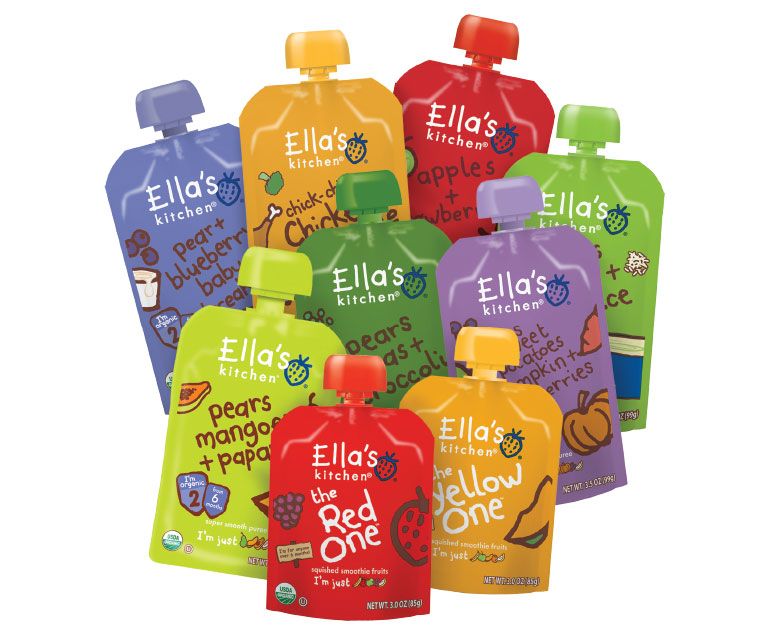 On the very first day of the collection for refugees from the DPR and LPR, we already sent 40 tons of food and essentials to the Rostov region. We often receive calls and ask what is essential. Firstly, these are personal protective equipment - medical masks, gloves, antiseptics. In the context of the spread of coronavirus infection in crowded places, this is especially important. Secondly, a block of personal care products for women and children. Thirdly, we need non-perishable food - tea, coffee, sugar, cereals, canned food, preferably not in glass containers. Also required are baby clothes and baby food, preferably dry. Things must be new, worn clothes as humanitarian aid have not been accepted for a long time. We do not accept men's things - there are no men among the refugees. Before coming, you can call us and consult. Over the past 24 hours, 40 people have already provided humanitarian assistance, and the same number have called to find out what needs to be brought.
On the very first day of the collection for refugees from the DPR and LPR, we already sent 40 tons of food and essentials to the Rostov region. We often receive calls and ask what is essential. Firstly, these are personal protective equipment - medical masks, gloves, antiseptics. In the context of the spread of coronavirus infection in crowded places, this is especially important. Secondly, a block of personal care products for women and children. Thirdly, we need non-perishable food - tea, coffee, sugar, cereals, canned food, preferably not in glass containers. Also required are baby clothes and baby food, preferably dry. Things must be new, worn clothes as humanitarian aid have not been accepted for a long time. We do not accept men's things - there are no men among the refugees. Before coming, you can call us and consult. Over the past 24 hours, 40 people have already provided humanitarian assistance, and the same number have called to find out what needs to be brought.
Telephone of the public reception of the Nizhny Novgorod branch of the United Russia party - 8 (831) 434 42 26.

